Part of a series of articles titled Staff of Saugus Iron Works and Salem Maritime National Historic Sites.
Article
Education Specialist: Maryann Zujewski
My name is Tahmoor Chadury, and I am an intern with the Latino Heritage Internship Program (LHIP) at Salem Maritime and Saugus Iron Works National Historic Sites. Through a series of articles, I'd like to highlight National Park Service employees in Salem and Saugus and ask them questions about their work. In honor of Juneteenth earlier this month, I chose to interview my immediate supervisor, Education Specialist, Maryann Zujewski, who I know has done a great deal of research into the roles African Americans played in the development of Salem, Massachusetts.
What has your journey been like in the National Park Service?
In college I was a double major in history and elementary education. The summer before my senior year, my history teacher suggested I try working at a historical site. I wasn't hyper aware of the National Park Service (NPS), but I applied around and Saugus Iron Works National Historic Site offered me a job. I worked there seasonally for five years and eventually got a full-time position. Later I moved to Lowell National Historical Park, where I worked for 14 years. When a management position at Salem Maritime and Saugus Iron Works came up, I applied for it and moved here. I’ve been here for ten years now.
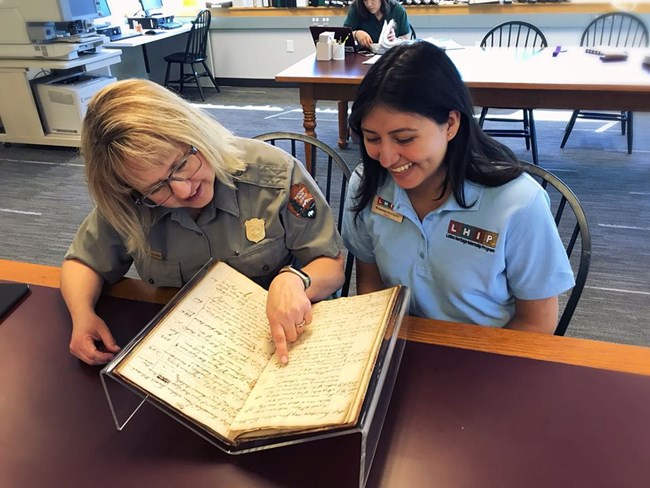
Can you give me a brief description of your job?
When I was first starting out, I was very much a de-facto ‘teacher’ at a historic site. I worked with teachers to help develop lesson plans, taught tons of students on field trips, developed new education programs, and worked with other national park rangers on their education programs. I was also involved in professional development courses for teachers. In the 10 years I’ve had this job, I continue to do that, but I also help teach and train staff.What part of your job excites you the most?
Probably working with interns and younger people (or people new to the National Park Service) who are still trying to figure out what they want for a career. Also, the preschoolers that come to our "Preschoolers in the Park" programs.How is the National Park Service interpreting African American history at Salem Maritime?
It has been a journey, a work in progress, and we still have a long way to go. If it were up to me, we’d completely flip the narrative and focus the stories on Black voices. African Americans are central actors in Salem’s history, but too often their stories are told as footnotes. At Salem Maritime, we offer a walking tour called History of Slavery at Salem Maritime to visitors and school groups. Now we’ve also made that tour accessible through the digital platform, Oncell. Anyone can take the tour at home on their computer or walking around the site on their phone. (Take the tour now.)We’ve also redone our brochure to include women, immigrants, free and enslaved people of African descent. We’re working on adding content to Salem Maritime's website, highlighting the role African Americans had in the development of New England.
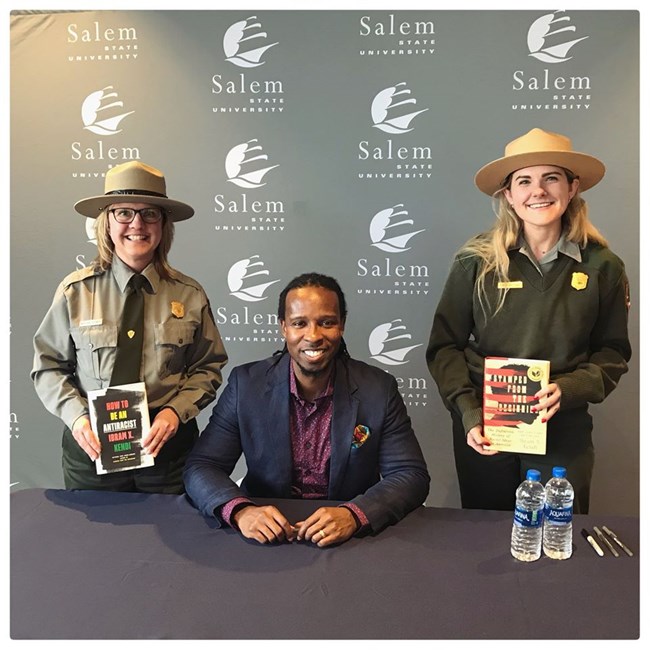
We’ve also offered numerous development courses for staff. In February of this year, we presented a workshop for classroom teachers, museum educators, and historic site interpreters called “Why This Matters: Stories of Slavery and its Legacies.” We brought in scholars of New England slavery, classroom teachers spearheading antiracist practices, and antiracist community leaders. Close to 75 people attended; and for us, it was a culmination of a lot of hard work, work we’ll continue. We have a responsibility to share this history. And that not only includes the hard and painful history of slavery and racism, but the stories of perseverance, survival, and the fight for equality. The work we need to do is ongoing. (Learn more about February's workshop by reading the article, Why This Matters: Stories of Slavery and its Legacies, or learn how to participate in next year's workshop.)
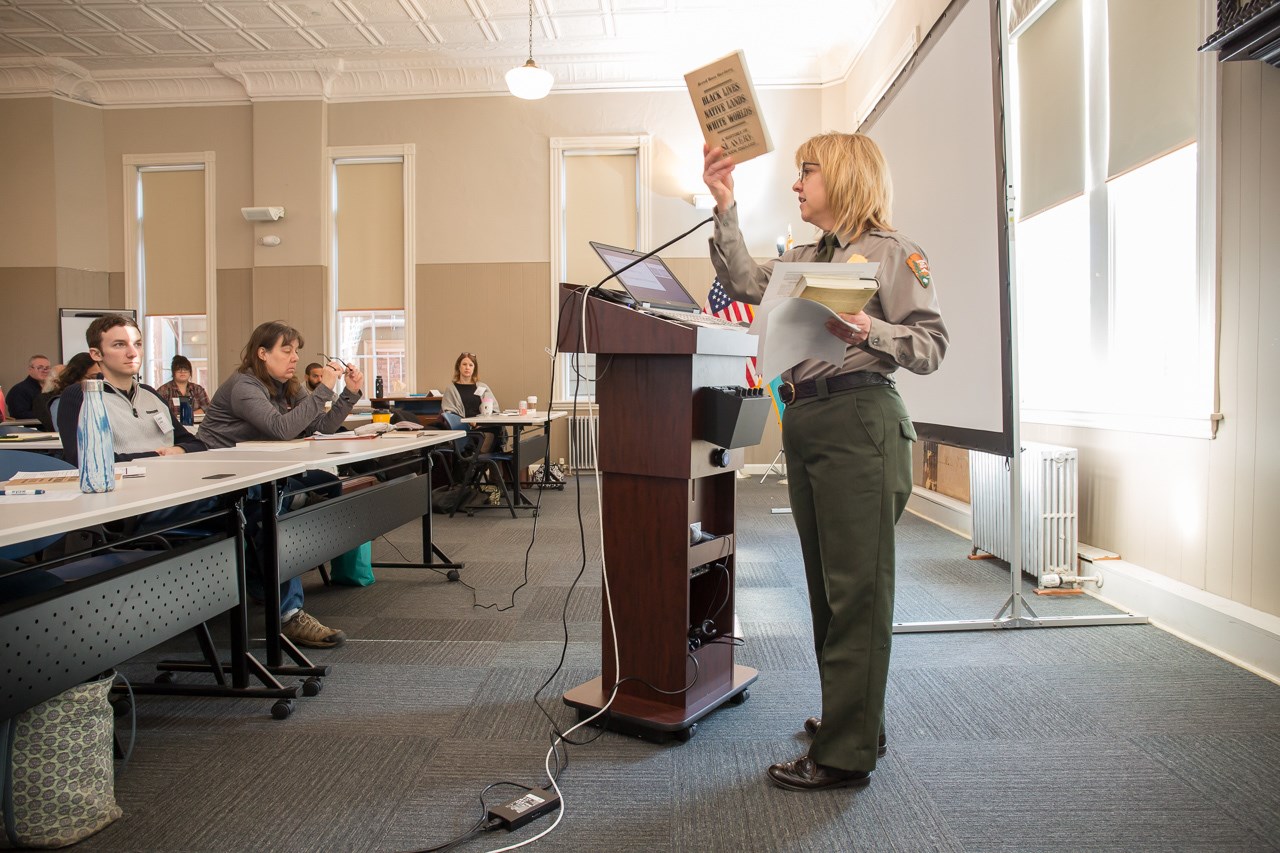
Have you received any pushback over these programs?
Some teachers have told us that their students “don’t want to hear this history.” They would prefer to focus on the “good parts” of maritime history. When we heard these concerns, we took a strong look inwards and decided we needed to do a better job presenting the significance of Black history and New England’s connections to the Atlantic slave economy. We have had park visitors on site and people on social media comment, “can we just forget about this and focus on the good parts of history,” or “slavery wasn’t that bad in the North,” or “these aren’t relevant stories.” But we’ve also had visitors thank us for presenting new information, challenging preconceived notions, and sharing Black voices.What kind of support have you received from the National Park Service?
Of course, we didn’t set off in this direction on our own without any sort of guidance from our larger agency. Some of our programs did originate from initiatives born out of the NPS in Washington, DC. For the past several years, the lack of diversity in the narratives and stories we tell at National Park Service sites has become a larger and larger discussion and focus. The 2011 Imperiled Promise report and the Urban Agenda are two examples of National Park Service inclusion initiatives seeking to change the narrative. The National Park Service is working to acknowledge the holes in the stories we’ve been telling, as well as the lack of diverse voices and perspectives. And the agency as a whole is working to remedy that.How did you come to share Black history at Salem Maritime and Saugus Iron Works?
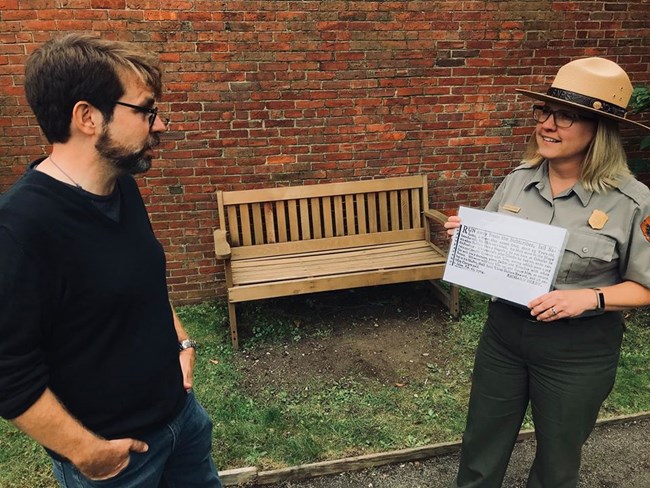
At Salem Maritime, park rangers had been mentioning two enslaved people for years during tours of the Derby House. In Elias Hasket Derby’s will, he bequeaths money to a man and women, Sabe and Rose. In his will, he describes them as his “negro servants.” Park rangers framed Derby as the kind, generous, “good slave owner.” This is a myth, not just at our site but across American history. Working with a scholar-in residence, Professor Bethany Jay of SSU, we learned there was more to this story. Although Derby’s will did set aside a sum of money for Sabe and Rose, it did not instruct the money to be given directly to them. Instead, his daughter was charged with keeping the money for safekeeping. We’ve found in the records a receipt after she received the money, but we have yet to find a receipt showing the money was given to Sabe or Rose. Here was a clear example of a New England myth of slavery, and proof that I had a lot more to learn.
Which African American historical figure do you admire the most?
Definitely Harriet Tubman. The sheer energy it took for her to do all she did, her selflessness and courage, are all truly amazing. There is so much more to her than what I heard growing up. One story I’ve learned is about when she worked at a refugee camp for formerly enslaved people in South Carolina during the Civil War. Tubman, along with other white female works, was given free army food rations. And because of this, she realized that the formerly enslaved people she was supposed to be helping were suspicious of her because she at first accepted the rations. So, unlike the white women that worked in the camps, Tubman decided to give up her food rations. If the freed people didn’t get them, neither would she. To support herself, she opened an “eating house,” in her home. She spent every night baking and cooking food to sell the next day, this after having already worked all day with the refugees. She used her earnings to construct a washhouse for the freed women who worked as laundresses for soldiers. She gave up her privileges to become a part of and truly serve the community.What advice would you give someone looking for a career in the National Park Service?
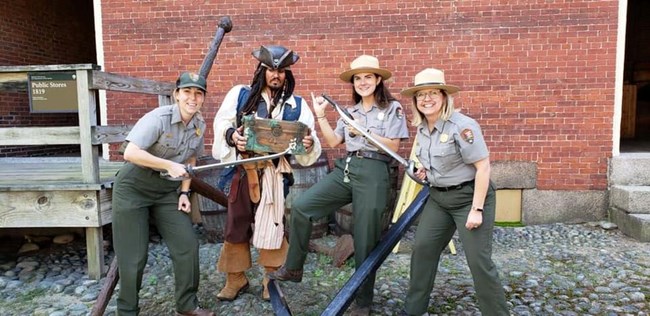
Is there anything else you’d like to add?
Interviews like this help me process the things I’ve learned. They make me wonder if we are on the right track or if there are more things we need to be doing. So, I hope this interview is as helpful to someone else as it is to me. And, one more thing. I do not accomplish things all by myself. Everything I've done has been in done in collaboration with others.This article was written by Tahmoor Chadury, who joins Salem Maritime and Saugus Iron Works National Historic Sites from the Latino Heritage Internship Program (LHIP) and Environment for the Americas. He is a rising senior at the Ohio State University pursuing a double major in biology and history. Chadury is originally from Brooklyn, New York.
Last updated: March 23, 2022
